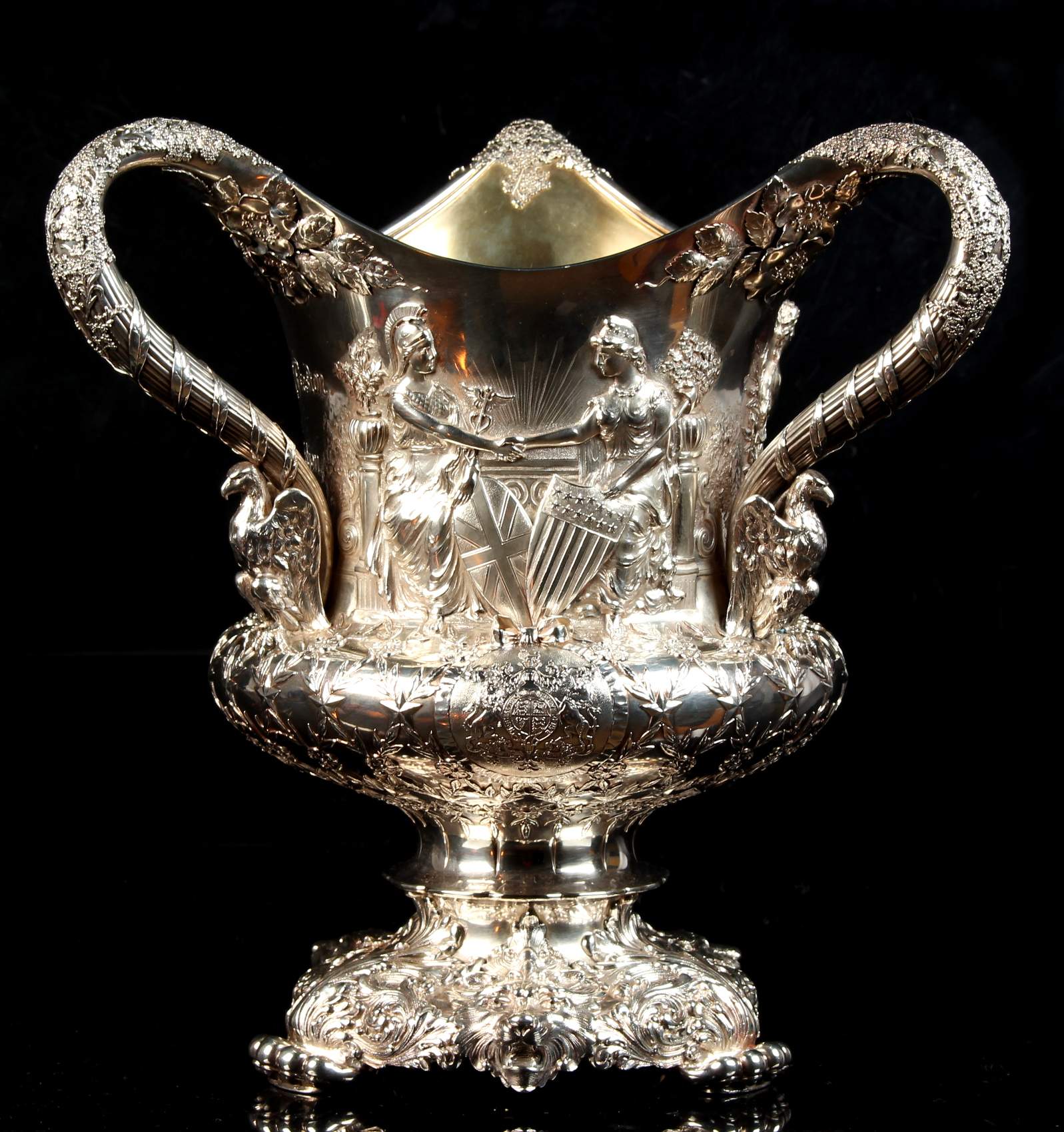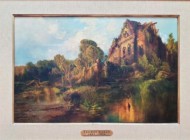SHAFTSBURY, DORSET, ENGLAND — Semley Auctioneers is offering a rare Tiffany & Co. silver three-handled trophy cup at auction on Saturday, April 15 at 10:30 am.
Sure to pique Anglo-merican Panama Canal historical interest, the circa 1900 piece, called the Hay-Pauncefote Treaty Cup, has been consigned by the property of a lady of title. Inscribed in low relief “To His Excellency / The Rt. Hon. Lord Pauncefote of Preston / G.C.B. G.C.M.G. / as a token of esteem and affection / from / John Hay / 1900,” the cup’s second side is chased with the seated figures of Britannia and Columbia shaking hands above the royal coat-of-arms. Its third side depicts seated figures of the goddesses Demeter and Tyche (Greek) or Ceres and Fortuna (Roman) exchanging gifts of corn, above the Great Seal of the United States. The cup’s three handles are wrapped in fruiting vines with perched eagles below, the base has lion masks and scrolling leaves. Stamped with the 1891-1902 mark “Tiffany & Co. / 14309 Makers 9628 / Sterling Silver / 925-1000 / T / 10 Pints’,” the cup stands 2.8 inches high, weighs approximately 3,220 grams and comes with original Tiffany & Co. fitted oak case.
Descended from the family of Lord Julian Pauncefote, 1st Baron Pauncefote (1828-1902), its is estimated $25/37,000.
The auction house provided some history of the cup. In the last years of the Nineteenth Century, American foreign policy officials began questioning the validity of the Clayton-Bulwer Treaty of 1850, whereby the United States and Great Britain agreed not to take independent action in creating a canal in Central America linking the Atlantic and Pacific oceans. Negotiations ensued between John Hay, secretary of state of the United States, and Lord Julian Pauncefote, British ambassador to Washington, culminating in the signing of the first Hay-Pauncefote Treaty on February 5, 1900, when this trophy was presented.
The treaty provided for joint British and American protection for any trans-Panama canal, but allowed for the United States to build and operate such a canal on its own. The US Senate was dissatisfied with the wording and amended the treaty to explicitly supersede the Clayton-Bulwer Treaty. Britain objected and, following further negotiations, the second Hay-Pauncefote Treaty was signed on November 18, 1901. The key points of this second treaty were that the United States would be authorized to construct and manage a Central American canal, and would guarantee the neutrality of the canal, and, to this end, build fortifications if necessary, and that this canal would always be open to all nations, with fair and equal rates of passage. The Panama Canal was the result.
Semley Auctioneers is on Station Road, Semley, Shaftesbury, Dorset. For information, +44 1747 855122 or www.semleyauctioneers.com.





